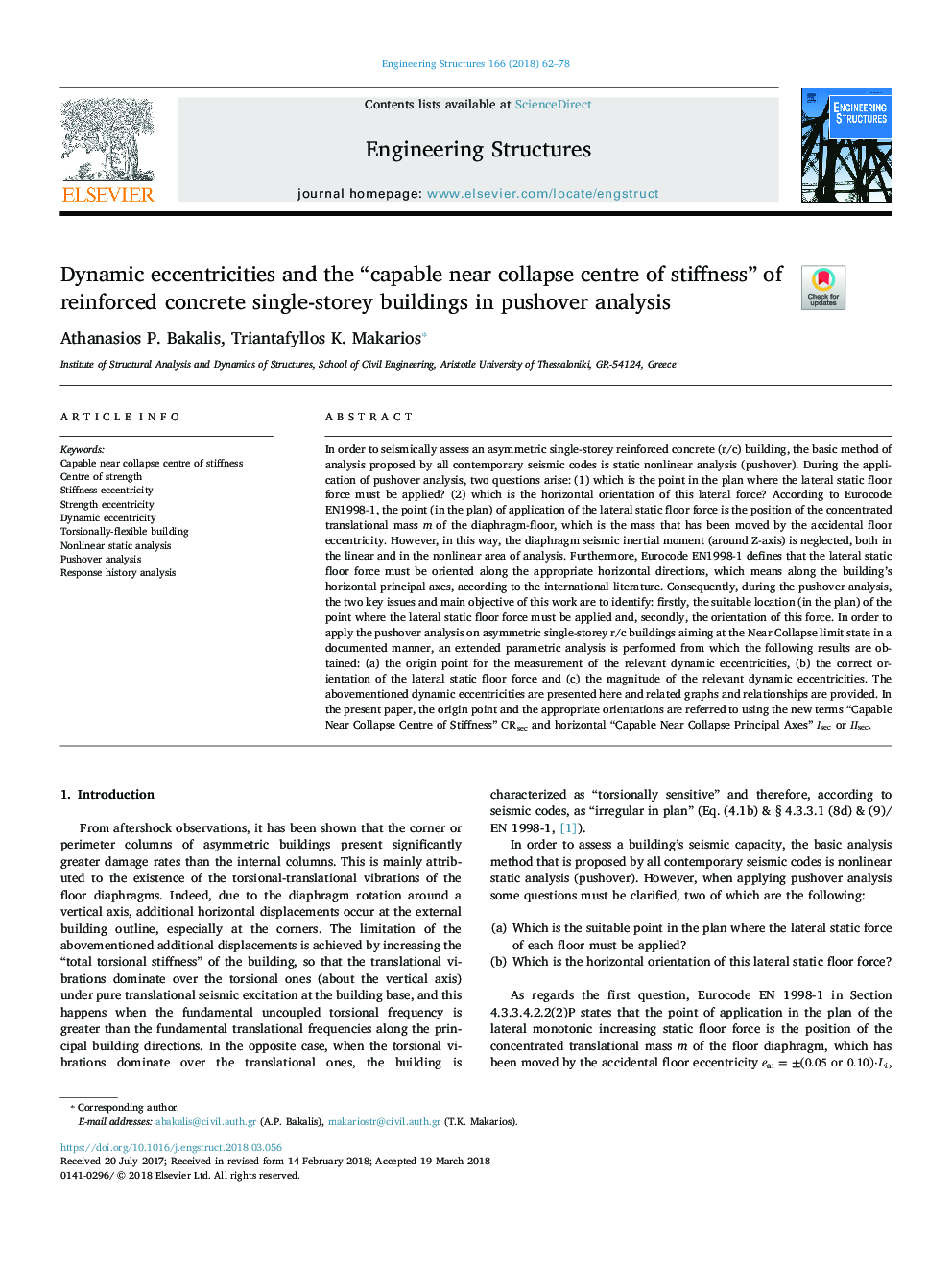| Article ID | Journal | Published Year | Pages | File Type |
|---|---|---|---|---|
| 6737423 | Engineering Structures | 2018 | 17 Pages |
Abstract
In order to seismically assess an asymmetric single-storey reinforced concrete (r/c) building, the basic method of analysis proposed by all contemporary seismic codes is static nonlinear analysis (pushover). During the application of pushover analysis, two questions arise: (1) which is the point in the plan where the lateral static floor force must be applied? (2) which is the horizontal orientation of this lateral force? According to Eurocode EN1998-1, the point (in the plan) of application of the lateral static floor force is the position of the concentrated translational mass m of the diaphragm-floor, which is the mass that has been moved by the accidental floor eccentricity. However, in this way, the diaphragm seismic inertial moment (around Z-axis) is neglected, both in the linear and in the nonlinear area of analysis. Furthermore, Eurocode EN1998-1 defines that the lateral static floor force must be oriented along the appropriate horizontal directions, which means along the building's horizontal principal axes, according to the international literature. Consequently, during the pushover analysis, the two key issues and main objective of this work are to identify: firstly, the suitable location (in the plan) of the point where the lateral static floor force must be applied and, secondly, the orientation of this force. In order to apply the pushover analysis on asymmetric single-storey r/c buildings aiming at the Near Collapse limit state in a documented manner, an extended parametric analysis is performed from which the following results are obtained: (a) the origin point for the measurement of the relevant dynamic eccentricities, (b) the correct orientation of the lateral static floor force and (c) the magnitude of the relevant dynamic eccentricities. The abovementioned dynamic eccentricities are presented here and related graphs and relationships are provided. In the present paper, the origin point and the appropriate orientations are referred to using the new terms “Capable Near Collapse Centre of Stiffness” CRsec and horizontal “Capable Near Collapse Principal Axes” Isec or IIsec.
Related Topics
Physical Sciences and Engineering
Earth and Planetary Sciences
Geotechnical Engineering and Engineering Geology
Authors
Athanasios P. Bakalis, Triantafyllos K. Makarios,
